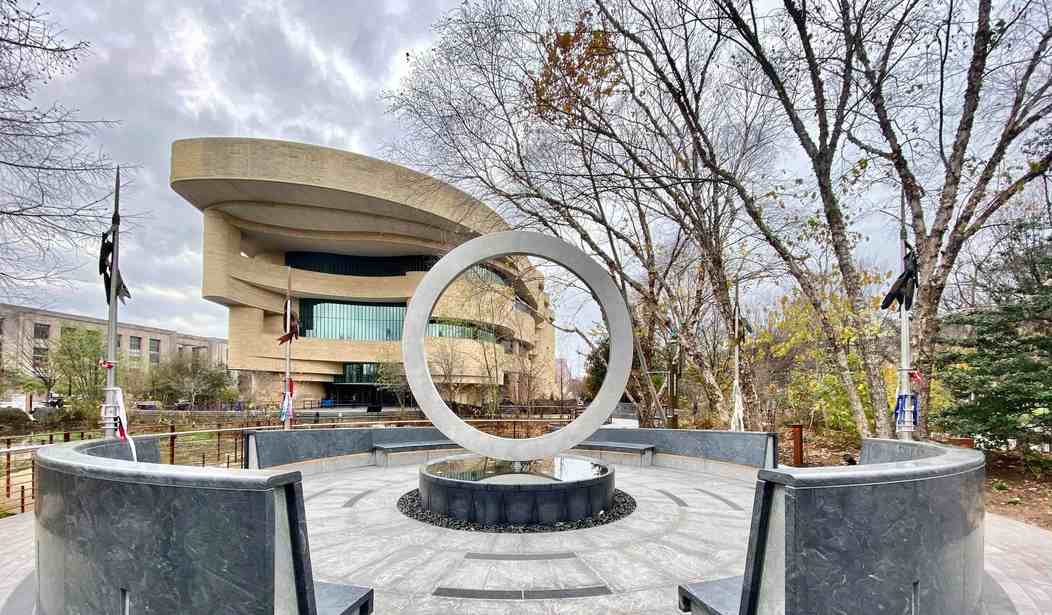There was a ceremony on the National Mall on Friday dedicating the newest memorial — the National Native American Veterans Memorial.
It was a bittersweet moment for many of the 1,500 Native American participants in the ceremony. As the Smithsonian put it, the service of Native Americans in the military was “a most enduring and complicated sacrifice of self, framed in a promise to uphold a government that has historically targeted, swindled and decimated their communities several times over.”
Native Americans have served in every war the U.S. military has fought in. What was the motivating factor given their treatment at the hands of the U.S. government?
“It’s not necessarily that we believed in Vietnam or any of the wars. It was a time that our people came forth to earn their rights — that’s right up there with respect,” explains Boye Ladd, a former Army Ranger from the Ho-Chunk and Zuni Pueblo tribes who served in more than 30 combat missions during Vietnam.
Ladd adds, “According to the original teachings of our people, there’s a relationship between the warrior and the enemy and the creator. When you take the enemy, it becomes a part of your life for the rest of your life. It becomes like a monkey on your back. You have to take care of them. You have to feed them throughout your lifetime.”
The Memorial tries to incorporate as much of that philosophy as possible into the design.
Artist Harvey Pratt, a Marine Corps veteran and member of the Cheyenne and Arapaho tribes of Oklahoma, infused that dynamic into the design for the National Native American Veterans Memorial, respecting the distinctions that exist among the approximately 574 federally recognized American Indian tribes but incorporating the commonalities that culturally thread them together.
Pratt’s concept was chosen from 120 submissions, and the resulting structure, completed in 2020 and nestled in a scenic living landscape complete with an urban wetland, incorporates an interactive gathering space with water for ceremonies, benches that invite visitors to be still and reflect, and four lances where veterans, their families, tribal leaders and community members can tie prayer cloths used by many Native people as a symbol of spirituality.
On Friday, some 1,500 Native veterans will gather to celebrate the newly installed National Native American Veterans Memorial. https://t.co/FNdS6mZhEi
— Smithsonian Magazine (@SmithsonianMag) November 9, 2022
Twenty-nine service members of Native American heritage have been awarded the Medal of Honor, the highest medal for valor: 25 soldiers, three sailors, and one Marine.
“The darker side of a ‘warrior tradition’ is that non-Native people have assumed that Indigenous service members have a sort of innate, supernatural ability in warfare, particularly for scouting. This means that Native people have been placed in positions of greater danger and have suffered higher mortality rates than other ethnicities in some cases,” says Alexandra Harris, senior editor at the National Museum of the American Indian and co-author of Why We Serve: Native Americans in the United States Armed Forces.
Native Americans serve at a slightly higher rate than other groups, and that may be due, in some cases, to family influences or tribal connections. Harris adds, “when you look at it from the perspective of Native peoples’ commitment to serving their peoples, communities and homelands, it becomes clearer. For most of the veterans I interviewed, they hadn’t considered their service to be part of their Native identity.”
Whatever their motivation for joining and fighting, their valor has been unquestioned in battle. And given the complex history between Native Americans and the United States government, their sacrifices become all the more remarkable.










Join the conversation as a VIP Member